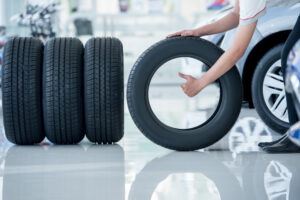If you’re a new car owner, then you probably still don’t know all too well why there’s such a big fuss when it rains after a car’s just been washed. Of course, it’s easy to deduce that the rain will wash away the new wax and shine of the vehicle, which is practically the same as seeing your dollars washed off as well.
That’s just the tip of the iceberg, though, because there are a lot more things that happen to your car when it rains. Here are some reasons why you should be wary of letting the rain do the washing of your vehicle.
Rainwater Damage
One of the most common misconceptions is that rain helps keep your car clean. After all, it’s washing away dust, grime, and debris that your car picked up on the road. The best part is that it’s free.
However, the truth of the matter is that rainwater can cause more potential harm to your car. That’s because, especially in densely populated areas like cities, the rain collects contaminants and other pollutants as it falls from the sky. This is what is otherwise known as Acid Rain.
By the time it hits the ground, or in this case, your car, it would have also carried with it these elements. As it dries up, it transfers these pollutants and residue onto the surface of your vehicle, leaving unsightly white splotches.
Not Just Water Droplets
Don’t be deceived by its delicate appearance. These splotches are not mere water droplets but are etchings. Run your hands over them, and you’ll realize your car’s surface is no longer smooth but instead now feels like there are little humps and bumps.
You should get rid of these etchings at the soonest possible time so that you can remove the pollutants from your car and prevent further damage. Wiping it down with a soft cloth or regular car cleaners won’t cut it, though.
To effectively take these out, you will need to use professional-grade buffing pads treated with a dual-action polisher. Then you polish and buff the area until it gets smooth again. However, if you don’t have these tools, you can go ahead and do a quick fix with a dry microfiber cloth.
You can bring your car into the car shop for a more thorough clean later on, but at least you’ve already minimized the etching for as much as possible.
Extra Protection for Your Car
Sure, cars are designed to withstand harsh conditions outside. However, this doesn’t mean you should just let it become damaged, even on an aesthetic level. Cars are investments in a way, and a fully functional one too, considering you’re ever reliant upon it to get you where you need to go. That’s why you should also pay close attention to its maintenance needs. One good way to ensure your car is protected is to have it painted with a protective coating.
Ask your trusted car shop about this option if your car still doesn’t have it already. Protective coatings are hard enough to resist scratches. They also repel water, which should be great for your vehicle paint—no more splotches, flaws, and etchings. Paint protective coatings are also anti-oxidation resistant and durable.
Aside from that, a simple maintenance wash every other week–one to two times within this period should be delicate–would work wonders for you, ensuring that there are no unsightly marks or stains on your car.
If you’re finding all of these too tedious for you, keep in mind that rainwater pollutants can eat away at your car paint eventually, which you will have to then spend to get it fixed.




